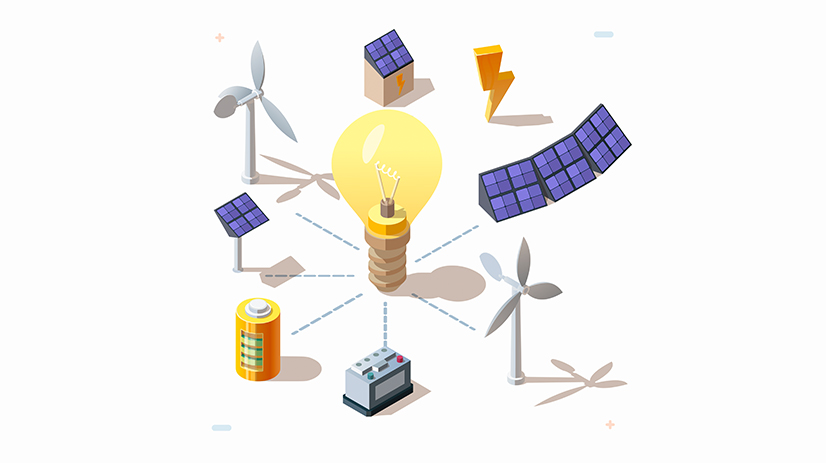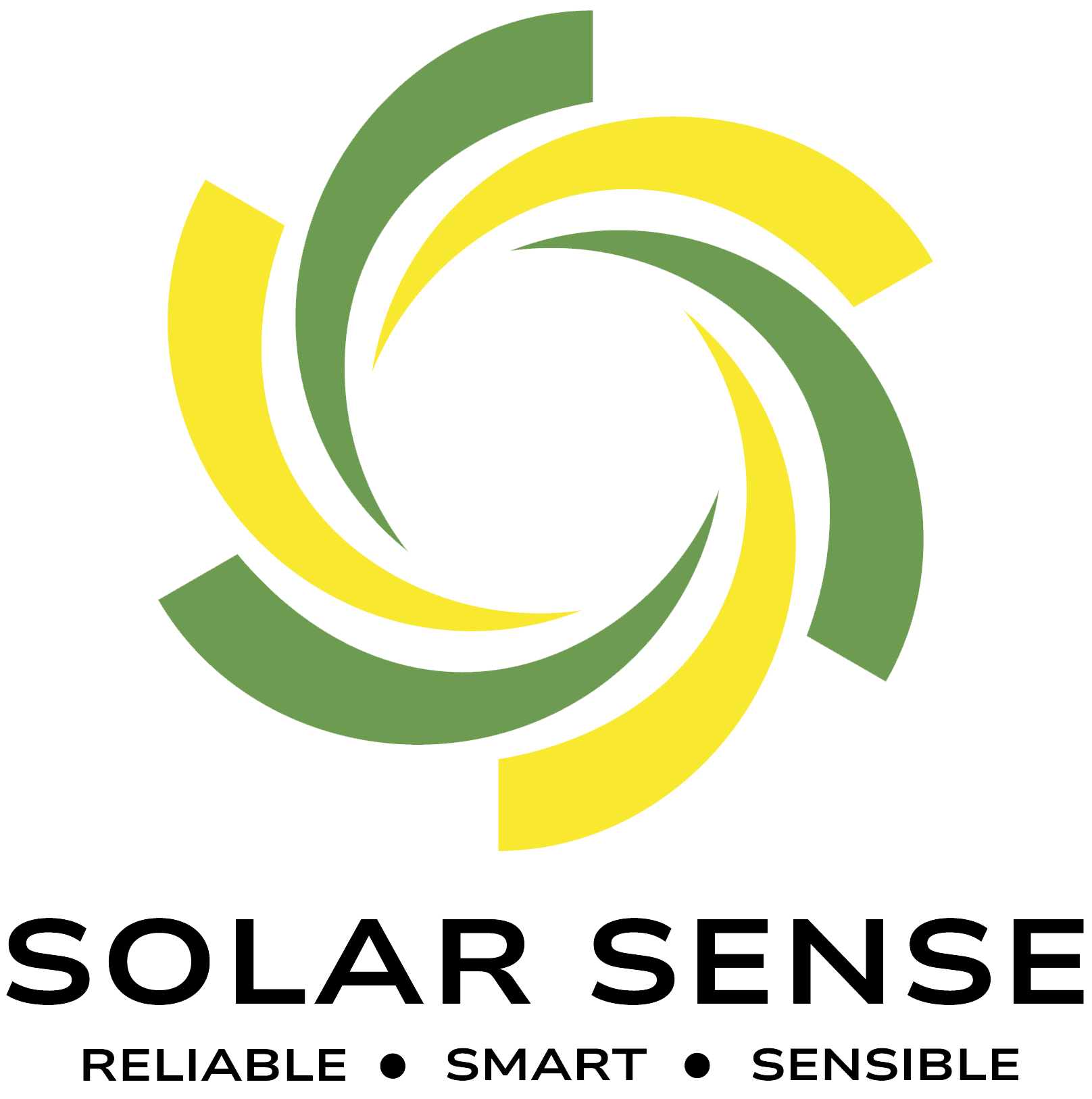Imagine a society in which all buildings, residential and commercial, are powered by clean, renewable solar energy. This vision is becoming a reality thanks to the rapid advancements in solar technology. A sustainable future depends on solar energy, which is becoming increasingly important as worries about climate change and growing energy costs increase. This blog will discuss solar energy’s definition, operation, and many advantages, which range from cost savings to less of an impact on the environment. Also, we will discuss the various kinds of solar energy systems, their uses, and the problems and solutions related to solar energy.
Lastly, we’ll examine solar energy’s future, emphasizing market trends and technology developments. Not only is solar energy crucial for lowering our carbon footprint, but it’s also a wise investment for the future, with the potential to revolutionize the energy
What is Solar Energy?
Various technologies capture and use the heat and radiant light from the sun, converting them into power for different industrial processes, heat production, and electricity generation. It is an endless, renewable resource that is essential to the switch to sustainable energy sources.
How It Functions
Sun thermal and photovoltaic (PV) cells are the main methods used to harvest sun energy. Solar panels, sometimes called photovoltaic cells, are devices that directly convert sunlight into electrical power. Electric currents are produced when sunlight strikes the semiconductor material in photovoltaic cells, exciting electrons. The photovoltaic effect is the term for this process.
In contrast, solar thermal systems utilize sunlight to heat a fluid, generating steam that can be used for heating or power generation. A form of solar thermal technology known as concentrated solar power (CSP) systems employs mirrors or lenses to concentrate sunlight from a broad area onto a small area. These high temperatures power heat engines connected to electrical power generators.
When combined, these technologies may capture solar energy and use it to generate clean, renewable power for a variety of uses, from large-scale industrial processes to individual residences.
Benefits of Solar Energy

1. Environmental Impact
Solar energy greatly decreases our carbon footprint and pollutant levels. Solar energy produces energy without releasing pollutants or greenhouse gases into the atmosphere, in contrast to fossil fuels. We can lessen our dependency on finite natural resources, lessen climate change, and minimize pollution of the air and water by switching to solar energy from traditional energy sources. Solar panels’ extended lifespan—often more than 25 years—aid long-term environmental sustainability.
2. Economic Benefits
There are significant financial benefits to solar energy use. The lower cost of electricity is one of the most attractive advantages. After installation, solar panels provide free electricity from the sun, significantly reducing monthly utility expenses. To further promote the use of solar electricity, numerous countries provide grants, tax credits, and refunds. With solar installations, these financial advantages can drastically lower the initial outlay and shorten the payback period. Financial savings from solar energy can reach thousands of dollars over time.
3. Energy Independence
By lowering dependency on imported energy and fossil fuels, solar energy improves energy independence. Homeowners, companies, and communities can safeguard themselves against unstable energy costs and supply interruptions by producing electricity locally. This decentralization of energy generation encourages a higher level of energy security and resilience. Widespread solar energy adoption can also improve energy sovereignty and national energy independence by lowering the requirement for energy imports from outside the country.
Types of Solar Energy Systems
1. Solar Power Systems (PV)
The most popular kind of solar energy system is a photovoltaic (PV) system. They use semiconductor materials, usually silicon, to turn sunlight directly into electricity. Through the photovoltaic effect, sunlight stimulates electrons in certain materials, resulting in the creation of an electric current. Large-scale solar farms, integration into building materials, or rooftop mounting are all possible setups for PV systems. Their versatility allows them to power everything from utility grids and huge buildings to little gadgets.
2. Thermal Solar Systems
Solar thermal systems use light from the sun to produce heat instead of electricity. These systems absorb and concentrate solar energy using solar collectors, such as evacuated tube collectors, flat-plate collectors, or parabolic troughs. Afterward, the heat is transferred to a liquid—typically water or an antifreeze solution—that can be utilized for various heating purposes. Common applications include space heating, water heating for homes and businesses, and even cooling using absorption chillers. Solar thermal systems work especially well in sunny areas where heating needs are high.
3. Solar Power with Concentration (CSP)
Concentrated solar power (CSP) systems produce high temperatures by focusing a significant amount of sunlight into a small area using mirrors or lenses. The high temperatures produced by these systems power a turbine connected to an electricity generator using steam. Solar towers, linear fresnel reflectors, and parabolic troughs are a few examples of CSP technology. Large-scale power stations usually use CSP to generate electricity for the grid. One of CSP’s main benefits is its capacity to include thermal energy storage, which makes it possible to generate electricity even when the sun isn’t shining and offers a steady and dependable power source.
Applications of Solar Energy

1. Residential use of solar energy
Residential solar energy is becoming more and more common. To produce electricity for their homes, homeowners install photovoltaic (PV) panels in their yards or on their rooftops. This cuts electricity costs while also reducing reliance on grid power. Since many residential solar systems are grid-connected, homeowners can use net metering to sell their excess electricity back to utility providers. Water heaters, pool heating systems, and home air conditioning systems can all be powered by solar energy. Furthermore, developments in solar technology have produced solar shingles that are indistinguishable from conventional roofing materials.
2. Commercial use of solar energy
Today’s companies are using solar energy to save on operating expenses and improve their reputation for sustainability. Commercial solar installations can be placed on vacant ground, parking buildings, or rooftops; they are usually larger than residential systems. These solutions show corporate social responsibility, save a considerable amount of energy, and lower carbon footprints. Some companies make solar energy investments to boost their competitiveness in environmentally concerned markets or to reach renewable energy targets. Additionally, solar thermal systems for space and water heating can help commercial buildings become less dependent on traditional energy sources.
3. Industrial use of solar energy
Industries employ solar energy for various purposes, including process heating, cooling, and electricity generation. Large-scale photovoltaic systems can power industrial complexes and factories, reducing operating costs and dependency on fossil fuels. For heat-intensive procedures including chemical processing, drying, and sterilizing, solar thermal systems are employed. Plants that use concentrated solar power (CSP) have the capacity to produce large volumes of electricity for industrial purposes. Industries are increasingly using solar energy to lower greenhouse gas emissions, increase energy efficiency, and adhere to environmental standards.
4. Community Projects using solar energy
Several people can profit from a single solar installation through community solar projects, sometimes referred to as shared solar or solar gardens. For people or companies who are unable to put solar panels on their own properties—such as tenants or those with improper roofs—these initiatives are perfect. A section of the community solar array can be purchased or leased by participants, who will then get credit for the power generated on their electricity bills. By making renewable energy available to a wider range of people, especially low- and moderate-income homes, community solar projects advance energy equity. They also promote a feeling of belonging and group efforts to achieve sustainability.
Challenges and Solutions for Solar Energy
1. Intermittency
The fact that sunshine is not always present during the day or in all weather situations is one of the main problems with solar energy. It could be challenging to generate electricity entirely from solar power because of this unpredictability. Innovative approaches, including energy storage devices, are easing this difficulty, though. Lithium-ion batteries and other battery storage technologies enable the storing of extra solar energy produced during bright spells for use at night or on overcast days. Furthermore, improved supply and demand balancing made possible by grid connectivity and sophisticated energy management systems guarantees a more dependable and steady energy supply from solar sources.
2. Initial Costs
The large initial outlay needed for solar installation is another issue with solar energy. Even though the price of solar panels has dropped dramatically in recent years, municipalities, businesses, and homes may still have large upfront costs when buying and installing solar systems. But over time, these upfront expenses may be balanced by long-term savings from lower electricity bills and possible incentives like tax credits and rebates. By distributing the payments over a number of years, financing solutions including power purchase agreements (PPAs), leases, and solar loans also increase the accessibility of solar energy.
3. Space Requirements
Solar panel space requirements can be difficult to meet, particularly in places with high population density or limited land availability. In both residential and business contexts, rooftop solar panels provide an effective way to maximize available space. But not every roof can support solar panels because of things like structural stability, orientation, and shade. Innovative approaches are emerging to address this problem, such as solar carports and building-integrated photovoltaics (BIPV), which enable solar panels to be erected over parking lots or integrated into building facades. Furthermore, improvements in solar technology, such bifacial modules and greater efficiency panels, are boosting the power production per unit area and lowering the total amount of space needed for solar systems.

The Future of Solar Energy
1. Technological Advancements
We expect technological developments that show promise for revolutionizing the solar energy business to emerge in the near future. The goals of research and development are to create new materials and production processes, as well as to increase the cost and efficiency of solar panels. For instance, perovskite solar cells have a lot of promise to outperform conventional silicon-based solar cells in terms of efficiency. Additional cutting-edge technologies like organic photovoltaics and tandem solar cells seek to lower production costs and improve energy conversion efficiency even more. Furthermore, by resolving intermittency concerns and promoting greater energy independence, developments in energy storage technologies—such as next-generation batteries and hydrogen storage systems—will supplement solar energy.
2. Market Trends
Globally, solar energy adoption is expanding exponentially due to falling costs, rising environmental consciousness, and pro-sun government initiatives. With annual capacity additions that exceed records, solar installations are becoming increasingly commonplace in the utility-scale, commercial, and residential sectors. Forecasts show that the solar business will continue to grow, with market trends pointing to a notable rise in solar capacity over the next few decades. Solar energy is positioned to be crucial to the global switch to renewable energy sources and the achievement of sustainability goals as it grows more and more competitive with traditional energy sources.
3. Policy and Regulation
Policy and regulation largely determine the future of the solar energy market. Globally, governments are putting in place a number of programs to encourage the use of solar energy, such as tax breaks, renewable portfolio standards, net metering, and feed-in tariffs. In addition, investments in solar infrastructure and innovation are being driven by ambitious targets for the deployment of renewable energy and the reduction of carbon emissions.
Policymakers are anticipated to encourage solar energy through improved subsidies, expedited approval procedures, and more stringent environmental laws as the pressure to address climate change increases. The need to switch to renewable energy sources, like solar electricity, is further highlighted by international agreements like the Paris Agreement, which are necessary to reduce climate threats and accomplish sustainable development objectives.
Conclusion
Solar energy is a promising solution for a sustainable future, offering environmental, economic, and social benefits across various sectors. Despite challenges like intermittency, initial costs, and space requirements, innovative solutions are emerging. Technological advancements, market trends, and supportive policies are accelerating solar energy growth worldwide. Homeowners, business owners, policymakers and advocates are considering the power of solar energy to shape a more sustainable world and join the renewable energy movement.





[…] These panels, made of high-purity mono (single) silicon crystal, are more efficient in converting solar energy into electricity per square meter area but are more expensive. They require less space for the same […]
[…] have been used for a long time. With innovative and less costly ways to capture and retain wind and solar energy, renewable energy is becoming a more important energy source, accounting for more than 12 percent […]